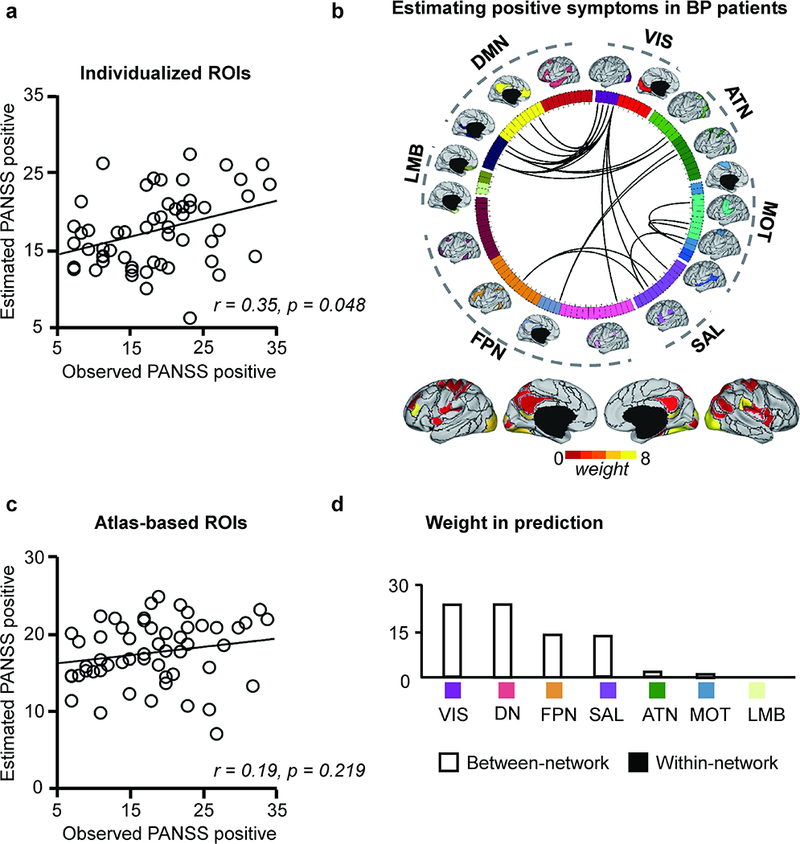Fig. 4.

(a) Functional connectivity among the subject-specific ROIs can predict the PANSS positive scores in 55 patients with bipolar disorder. The predicted and observed PANSS positive scores are significantly correlated (r = 0.35, p = 0.048, permutation test). (b) Twenty-six connections that are predictive of the PANSS positive scores are plotted on the wheel. (c) Functional connectivity based on the brain template is not able to predict the PANSS positive scores in these patients (r = 0.19, p = 0.219, permutation test). (d) The prediction based on subject-specific ROIs is also driven by between-network connectivity involving the SAL, DN, VIS, and FPN.
